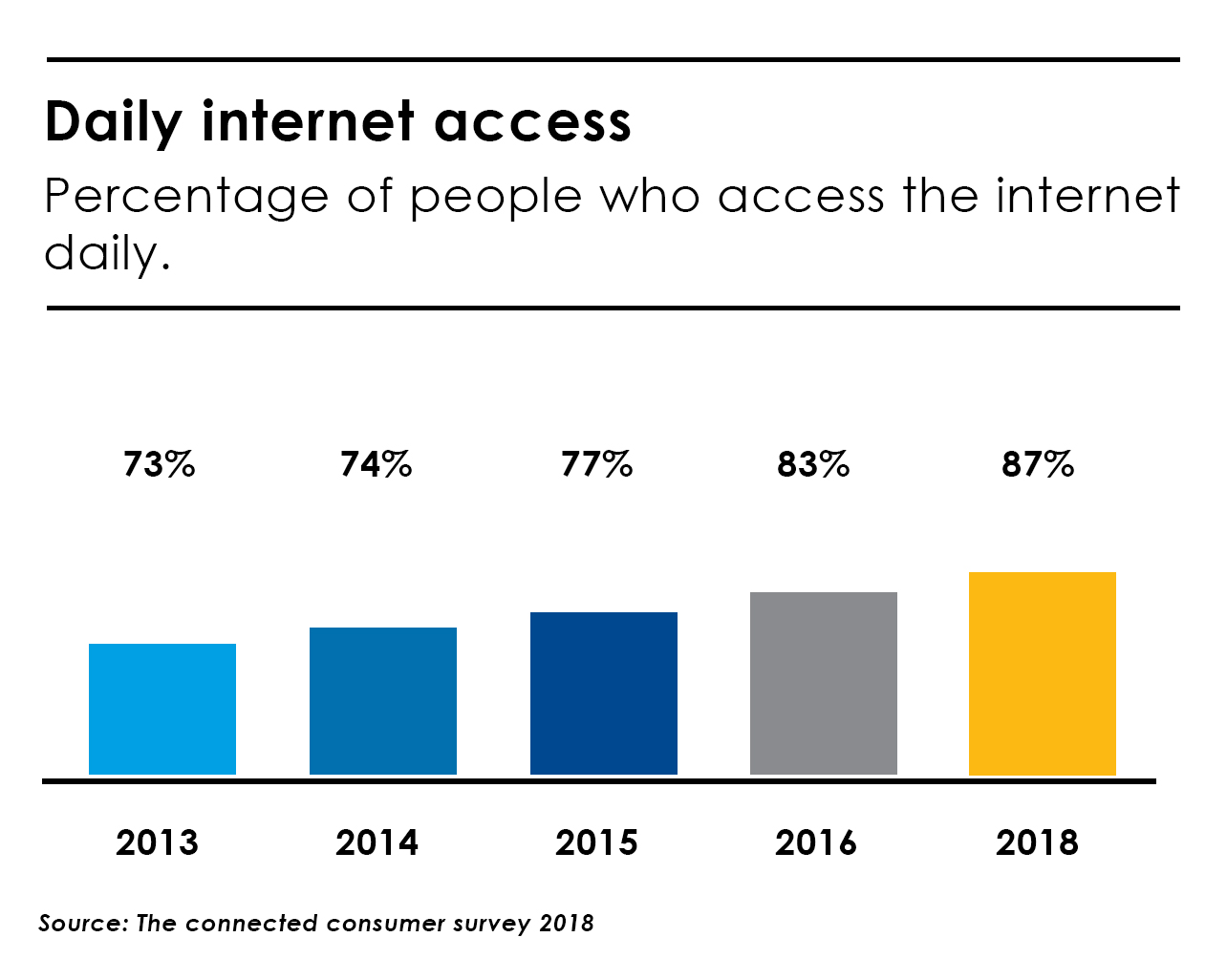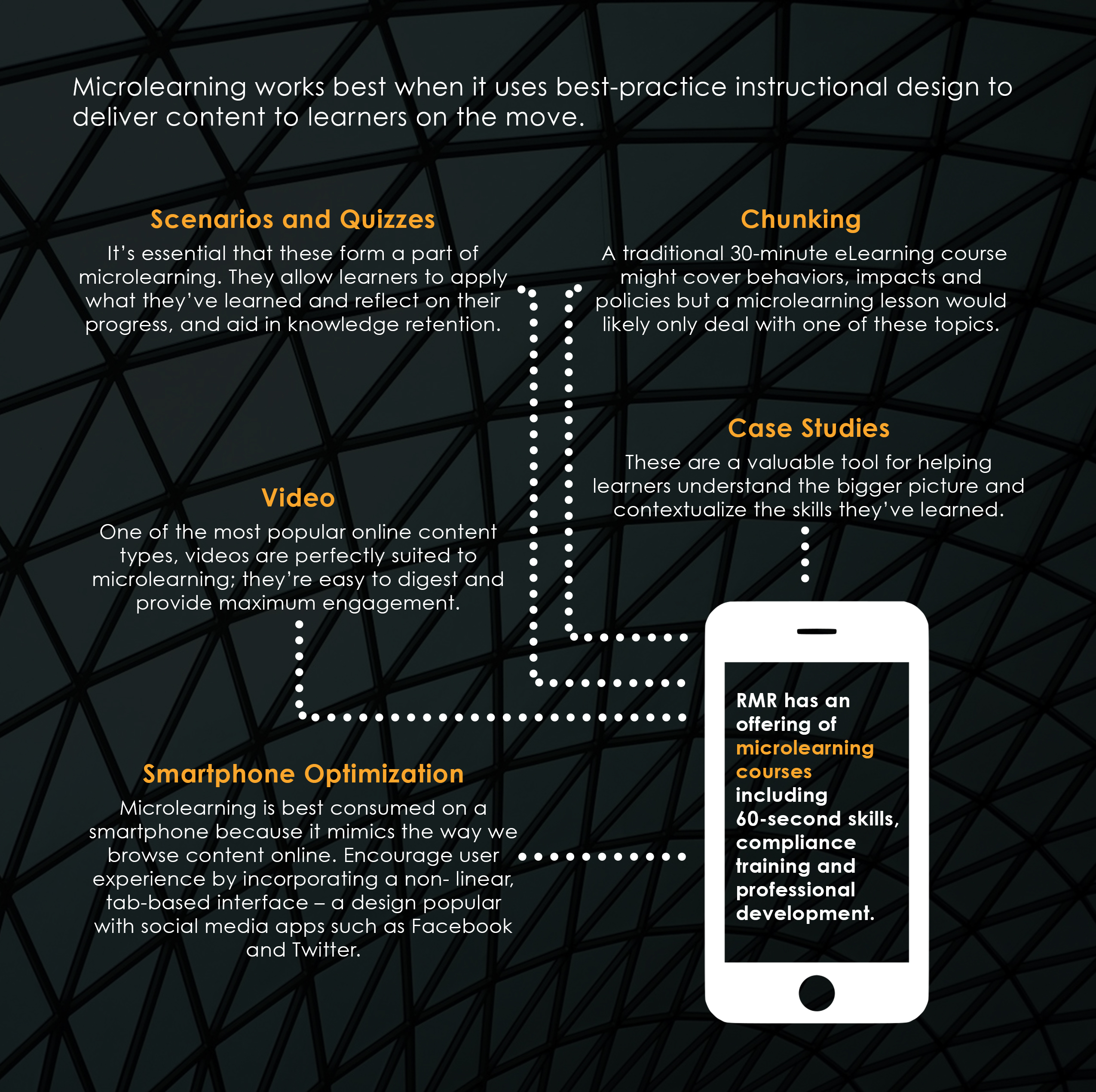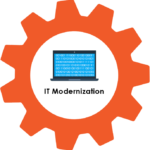Microlearning
Microlearning for Macro Change
Microlearning can play a big part in eLearning and learning and development (L&D) circles. But what does it mean? Broadly speaking, microlearning offers learning delivered in short, focused bites. It offers the potential to transform the way organizations deliver training to their employees.
Microlearning puts efficiency first
Today, HR and L&D departments are under increasing pressure to deliver training in as little time as possible. Meanwhile, busy workers are seeking new ways to fit training into their packed workdays. Microlearning is a potential solution.
Old tricks, new name
Smart employers are increasingly using microlearning to deliver corporate training in bite-sized lessons. Companies such as Uber, Gap and Pernod Ricard S.A. are among them. In the Wall Street Journal, Calvin Ng, Director of L&D at Pernod Ricard U.S.A., points out that:
What is microlearning?
The use of microlearning in corporate training has become popular, yet there’s no consensus as to how it’s defined. The following offers several different descriptions.
Short Lessons
Short lessons, often part of a series or program, that support longer term learning goals.
Self-Directed
Self-directed and informal learning.
Performance Support
Performance support to aid reinforcement (e.g. incidental or supplementary training accessed as needed).
Characteristics for Characteristics for Microlearning
While microlearning can be structured in many ways, it works best when it adheres to some of these following characteristics.

Short
The shorter the training, the better. However, there’s no standard length for microlearning; some providers restrict it to one minute, while others consider a 15-minute course microlearning.

Granular
Microlearning should only cover one or – at most – two learning objectives.

Relevant
Keeping content relevant is critical. You have little time to convey your message, so it’s best to avoid the filler and focus on essential information.

Just-in-time
It’s best to have the learning material available as soon as a gap in knowledge or skills is identified. It’s what makes microlearning useful as part of performance support or refresher training.

Mobile friendly
Microlearning is particularly suited to mobile delivery because it’s aligned with the way learners access content and it keeps learners focused on essential information.
Why Microlearning Suits Today’s Workers
Gone are the days of going to the library to hunt down a fact. Today’s learners are mobile- and web savvy; we go straight to the internet for instant answers. Whether it’s TED Talks, YouTube videos or Google News updates, when we need information, it’s right there at our fingertips. Google’s Consumer Barometer shows that last year 87% of people used the internet daily. This doesn’t apply only to Generations X and Y. In fact, 67% of people aged 55 and over access the internet daily, indicating that older learners are not averse to online training.
Information delivery

These days we’re accustomed to being bombarded with information – just look at the 24-hour news cycle – and the way we’re presented with this information has also changed. For example, from BuzzFeed to reputable news sites such as The Age, listicles are an increasingly common way to convey information. They’re digestible, and they allow users to gauge how much time they’ll need to devote to reading them.
Learning Benefits
While microlearning itself is a relatively recent development, the principles it adheres to are certainly backed by research, as outlined below.

Reduces Cognitive Load
Cognitive load is the idea that learning requires you to process information in a specific order. Intrinsic load concerns the intrinsic nature of the information being absorbed, and extraneous load concerns the presentation of the learning content.

Minimizes Extraneous Cognitive Load
Because microlearning is shorter, its brevity means it includes only the most pertinent information. It eliminates material that ‘distracts, disrupts and seduces’ learners. By adhering to the coherence principle, it avoids adding any material that does not support the instructional goal.

Encourages Autonomous Learning
Microlearning tends to encourage autonomous learning, or at least grants learners more control over their learning via self-pacing. Research shows that this benefits learners who already have good domain knowledge of the topic.

Facilitates Relevant, Just-In-Time Training
Intrinsic motivation is an important benefit of just-in-time (or point-in-time) training. When intrinsically motivated, a person is motivated by their own, internal rewards. Because the training is available when and as they need it, micro learners are more likely to be motivated to complete their lessons, as opposed to being ordered to undertake a 45-minute compliance course by their HR manager. What’s more, when you’re driven to complete something for your own sake, you’re more likely to retain the information.






